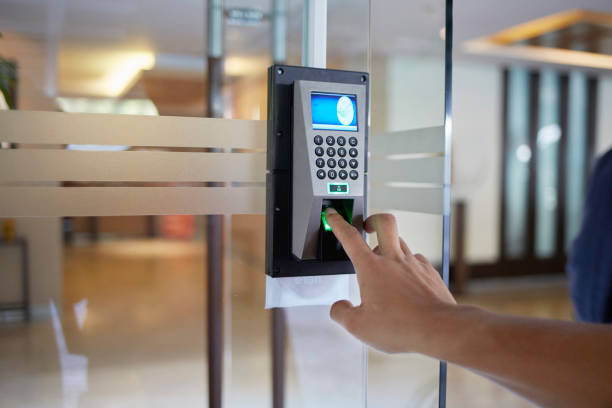In an era where security is paramount, door access control systems have emerged as indispensable tools for safeguarding physical premises and managing access to sensitive areas. From corporate offices and government facilities to educational institutions and healthcare centers, organizations across various sectors are increasingly.
turning to access control solutions to fortify their defenses against unauthorized entry and ensure the safety of occupants and assets. In this article, we explore the benefits and functionalities of door access control systems and their role in enhancing security and efficiency.
Understanding Door Access Control Systems: A Comprehensive Overview
At its core, a door access control system is a security solution designed to regulate and monitor entry into buildings or restricted areas. Unlike traditional lock-and-key mechanisms, access control systems employ electronic credentials, such as key cards, fobs, or biometric identifiers, to grant or deny access to individuals based on predefined permissions and rules.
These systems typically consist of several key components, including:
- Access Control Panel: The central hub that manages and coordinates access control devices, such as card readers, door locks, and sensors.
- Credential Readers: Devices used to authenticate individuals’ credentials, including proximity card readers, keypads, and biometric scanners.
- Door Locks: Mechanisms that control physical access to doors, gates, or barriers, which can be electronically controlled and monitored.
- Software Interface: User-friendly software interface for system configuration, user management, access logs, and real-time monitoring of access events.
Benefits of Door Access Control Systems
Implementing a door access control system offers a multitude of benefits for organizations seeking to enhance security, streamline operations, and improve overall efficiency:
- Enhanced Security: Access control systems provide granular control over who can access specific areas, minimizing the risk of unauthorized entry, theft, or vandalism. In the event of a security breach, administrators can quickly revoke access privileges and mitigate potential threats.
- Improved Accountability: Access control systems maintain detailed audit trails of access events, including entry and exit times, user identities, and access attempts. This accountability helps deter misconduct and provides valuable insights for investigations and compliance purposes.
- Flexible Access Management: Administrators can easily configure access permissions and schedules to accommodate changing security requirements and operational needs. Whether it’s granting temporary access to visitors or restricting access during non-business hours, access control systems offer unparalleled flexibility and control.
- Remote Monitoring and Management: With cloud-based access control solutions, administrators can remotely monitor and manage access control systems from anywhere with an internet connection. This capability enables real-time visibility into access events, remote troubleshooting, and seamless integration with other security systems.
Future Trends and Innovations
Looking ahead, the future of door access control systems is characterized by advancements in biometrics, artificial intelligence, and interoperability. Biometric authentication methods, such as facial recognition and iris scanning, are gaining traction due to their accuracy and convenience. Additionally, AI-driven analytics enable predictive security measures and proactive threat detection, while interoperability standards facilitate seamless integration with other building systems, such as video surveillance and intrusion detection.
In conclusion, door access control systems play a vital role in safeguarding physical assets, protecting personnel, and ensuring regulatory compliance. By leveraging the latest advancements in technology and embracing a proactive approach to security, organizations can create safer and more secure environments for their stakeholders.

